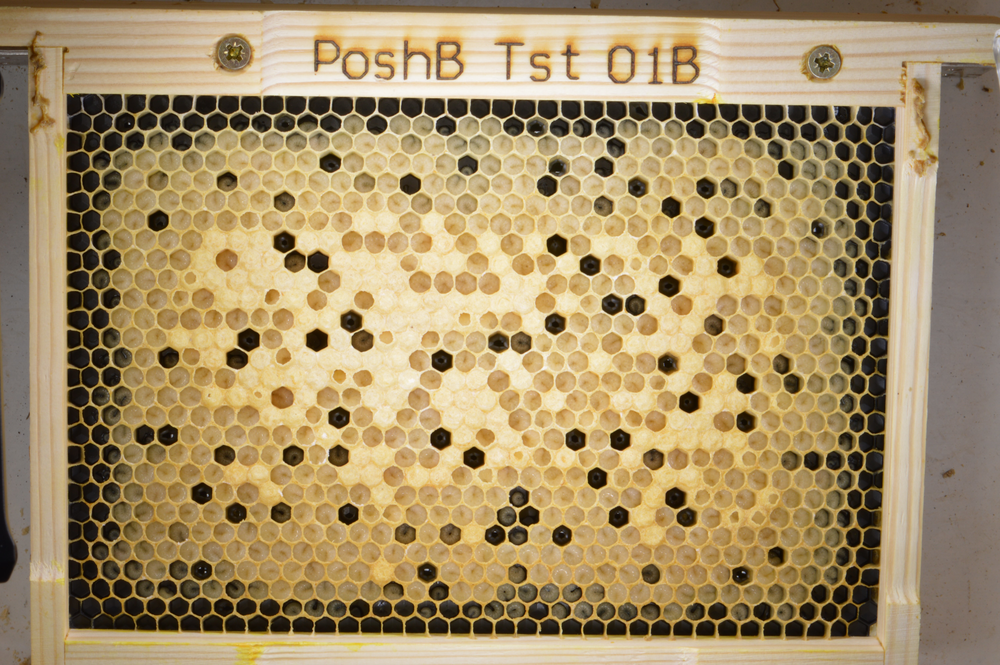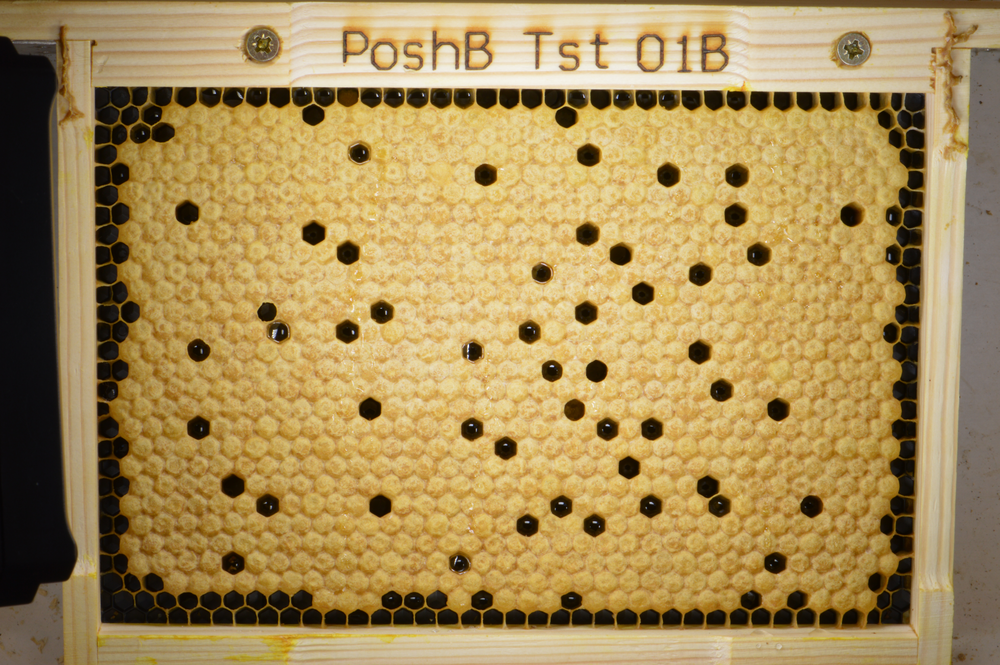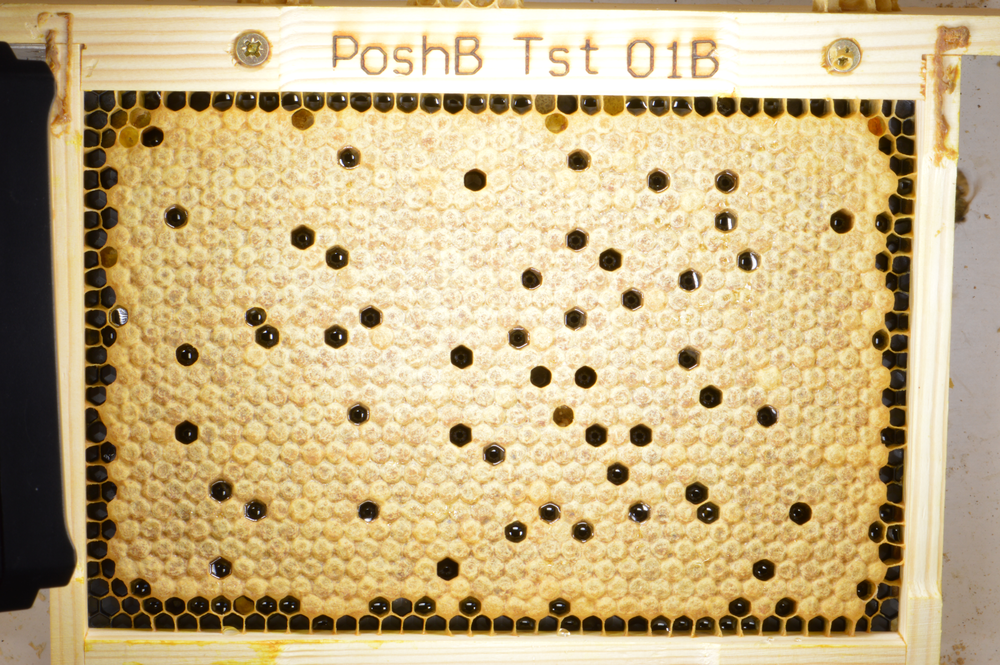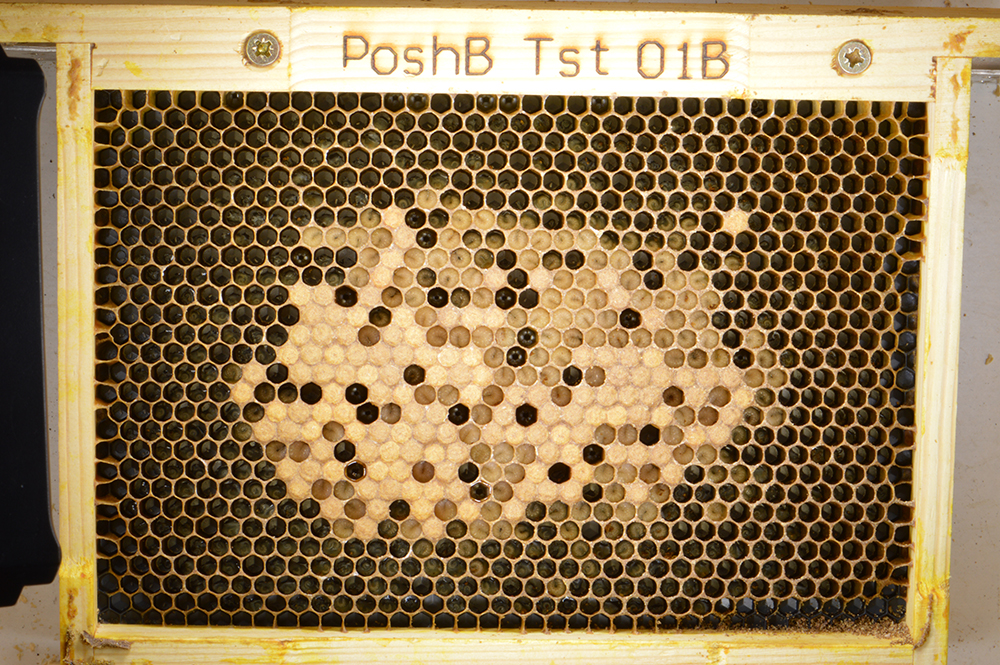pan-european assessment, monitoring, and mitigation of stressors on the health of bees
Honeybee brood development cycle
This feature was provided by Matthew J Allan, ATPOLL: Atlantic Pollination Ltd.
This sequence of photos from the PoshBee semi-field studies team shows the development of one frame of honeybee brood, from eggs to larvae to prepupae to pupae to emerged adult, and then the cycle starts again. The photos follow the recommendations of OECD Guidance Document 75, designed to detect subtle impacts of chemicals and other stressors on brood. In this example, we can accurately follow the life of each bee in almost 900 individuals and we can detect mortality and pinpoint when death occurred.
The images are best viewed when enlarged. They demonstrate how the most difficult stages to photograph, i.e. the eggs and first instar larvae, are captured. Because of the quality of these images, the photos can be analysed accurately and quickly using image recognition software, delivering large amounts of high-quality data with minimal effort.
The use of black plastic foundation enhances the contrast between eggs and young larvae and the comb. It also prevents the hive bees biting holes in the comb and allowing the queen to escape. The basis of this system is the unique study frame developed for use in PoshBee studies, which has optional queen excluder covers and ventilated covers. These clip to the frame using strong magnets and enhance the functionality of the system.






Photo sequence showing the development of one frame of honeybee brood, from eggs to larvae to prepupae to pupae to emerged adult.